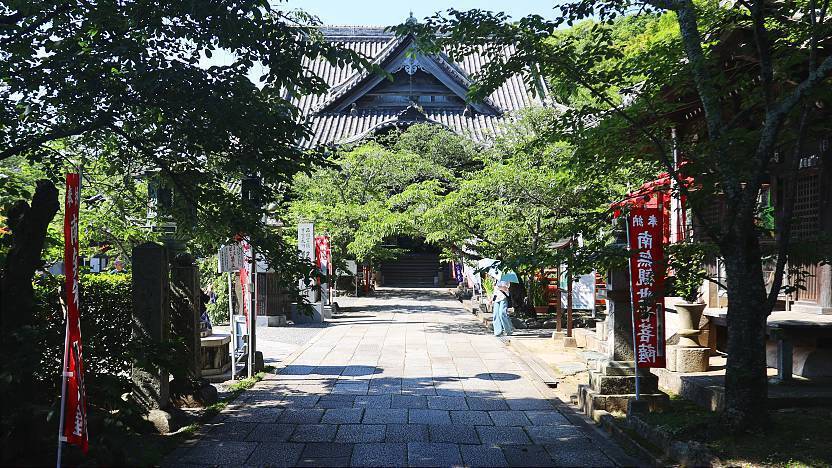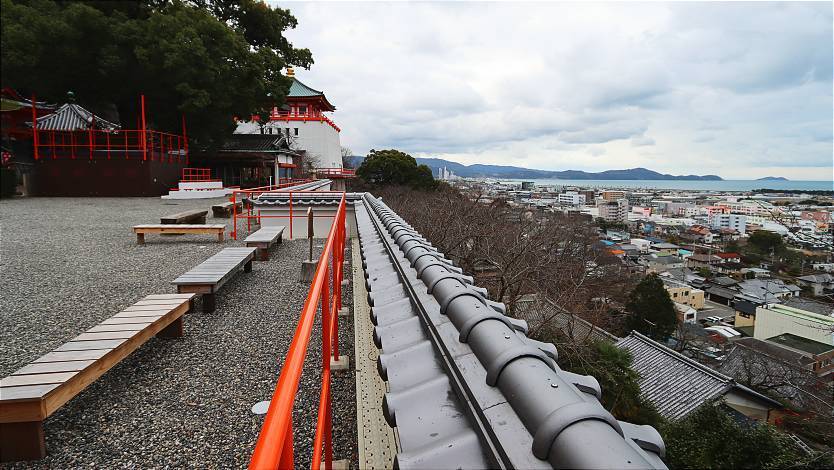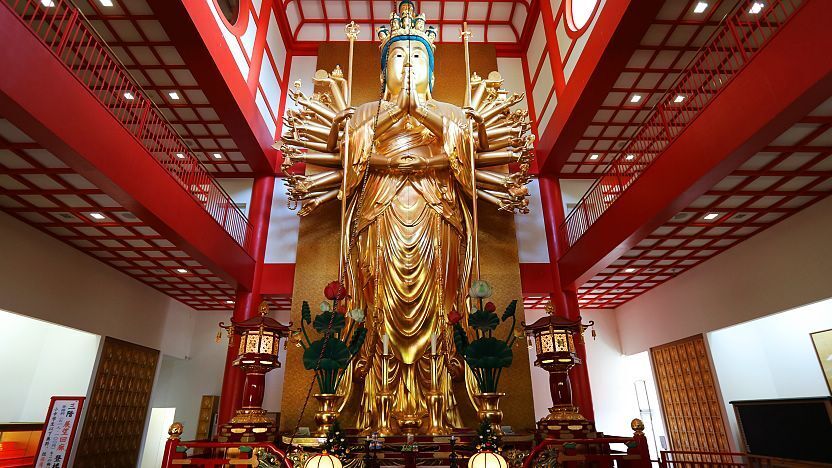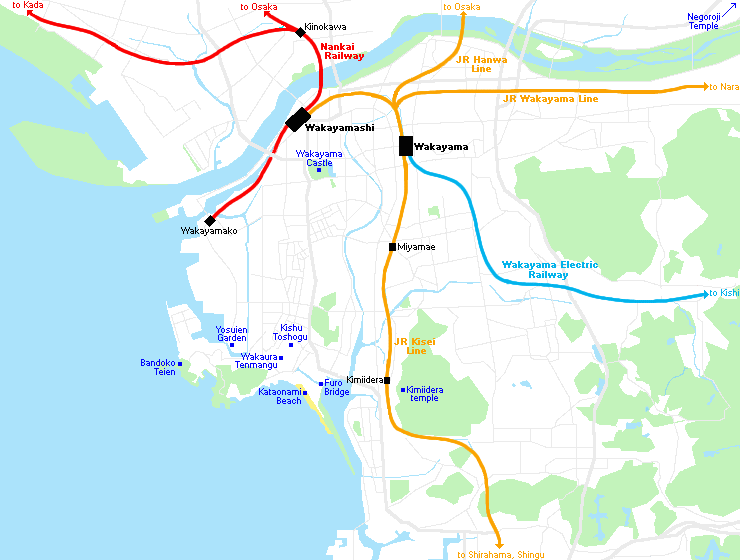Kimiidera Temple

Kimiidera (紀三井寺) is a prominent temple in Wakayama City, where it overlooks the Wakaura Bay from the lower slopes of Mount Nakusa. Its name comes from three sacred springs that flow within its grounds, said to have been venerated since ancient times. The second of 33 temples included on the Saigoku Kannon pilgrimage route, it is well known locally for the 500 or so cherry blossom trees within its grounds, which are of an early flowering variety and typically bloom from mid-March to early April, making them among the earliest in the Kansai Region.
During Japan's era of warring states the temple, along with Negoroji, became a stronghold of militant Buddhist warrior-priests, determined to resist any kind of central authority. In 1585, both temples were attacked by the warlord Toyotomi Hideyoshi as part of his campaign to pacify and control the Kansai Region, resulting in the loss not only of many buildings but also its historical records - for this reason, relatively little is known about its history up to that point.

The temple's main hall dates to 1775, featuring a wide veranda and dramatic stairway leading up to the entrance. The building houses two important statues of the deity Kannon in her eleven headed and 1000 armed aspects, as well as a secret image of the Buddha, however these are kept out of sight in a special treasure house at the rear. A few steps from the hall is a broad terrace offering sweeping views over the city toward the coast - the spot is especially popular during the cherry blossom season when the hillside below is covered with pink blooms.
The modern Shinbutsuden Hall houses a 12 meter tall wooden statue of 1000 armed Kannon coated in gold leaf, while its rooftop doubles as an observation deck.

Getting there and around
Wakayama and Kimiidera stations are connected by regular trains along the JR Kinokuni Line (7 minutes, 190 yen, two departures per hour). From the station, the temple is a 15 minute walk.
For those arriving by car, there are several parking lots at the foot of the hill and one just above the temple reached by a steep road.
From ground level, visitors can reach the temple by cable car, or by a steep flight of 231 stone steps called the yuenzaka or matchmaking slope. A sign at the bottom commemorates a record time of 21.9 seconds for the climb set by former Olympic sprinter and bobsledder Aoto Shinji.
How to get to and around Wakayama City
